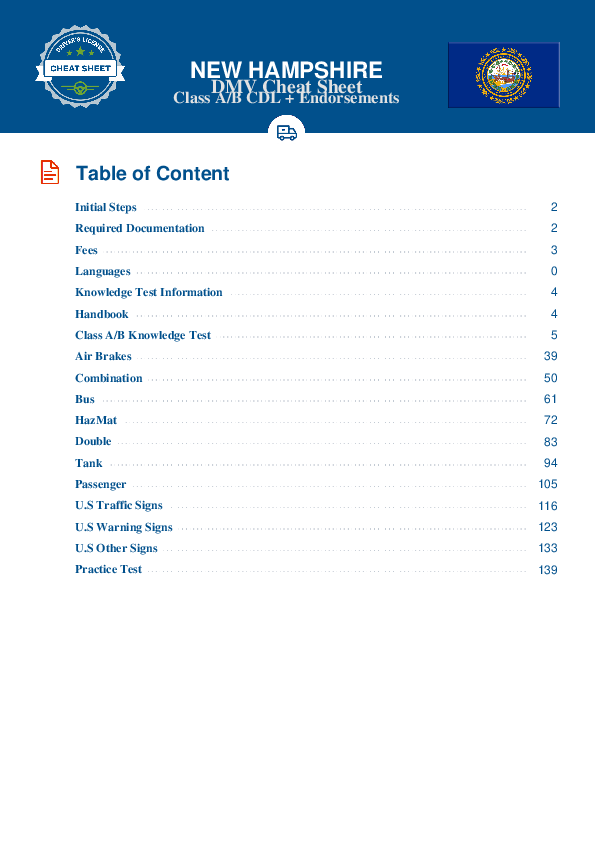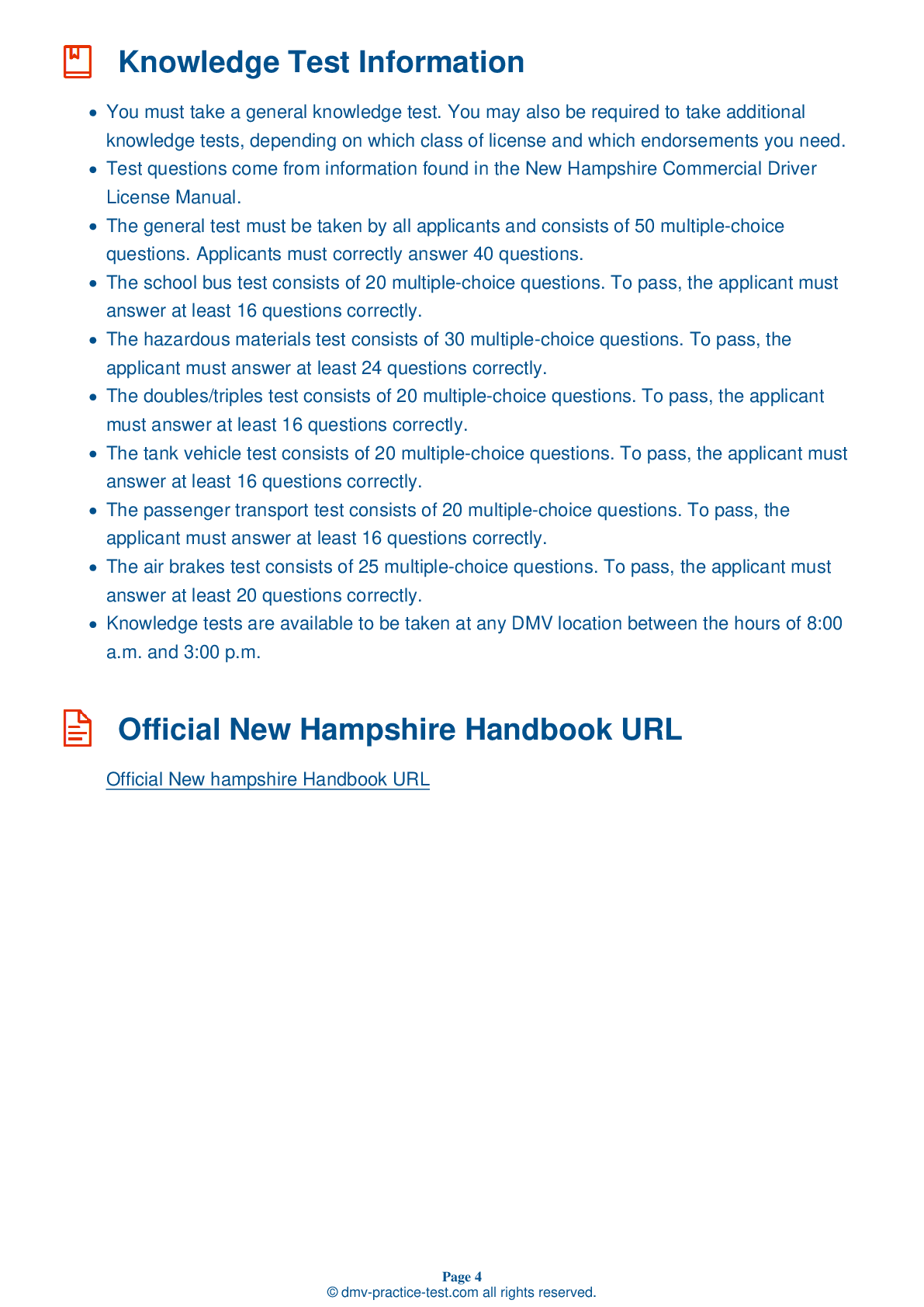Tank Endorsement Test | New Hampshire 2026 #1
Train for FREE with our New Hampshire tank endorsement practice test online. The official exam test consists of several obligatory parts, with all of them checking your knowledge of different blocks of road rules. If you need to obtain a NH tank license in 2026, practice as much as possible. Free sample tests published on our website will help you check and improve your knowledge and boost your grades. Please bear in mind that DMV requirements for issuing a CDL tank vehicle endorsement may vary from state to state.
1 . After an accident, flares should be used with caution because:
After an accident, spilled fuel and improper use of flares can result in a fire.
2 . When approaching a railroad crossing, you should:
As a precaution, you should always approach a railroad crossing under the assumption that a train is coming. Do not rely only on signals or your hearing to indicate that a train is approaching.
3 . Tar in road pavement often rises to the surface of the road in very hot weather. Spots where the tar bleeds:
In very hot weather, watch for places where tar bleeds to the surface of the road. These areas are very slippery.
4 . After a trailer starts to turn during backing, you should follow the trailer by:
When backing a vehicle with a trailer, you must turn the steering wheel in the direction opposite of where you want to go. Once your trailer starts to turn, you should turn the steering wheel the other way to follow the trailer.
5 . A cargo van carrying a light load is usually:
The added weight of a heavy load will make a vehicle sit lower than usual. A vehicle will often be taller when carrying a light load than when carrying a heavy load. If your vehicle fits under an overpass while carrying a full load, it is not guaranteed that it will fit under the same overpass if it is empty.
6 . If you are turning left where there are two available turning lanes:
If making a left turn where there is more than one available turn lane, you should always choose to take the rightmost lane. Large vehicles often have to swing right to make left turns, so it is safer for you to have other left-turning traffic to your left. This will allow you to have the best possible view of other turning vehicles and will lower the risk of your vehicle colliding with them.
7 . If you are experiencing an engine fire, you should:
In the event of an engine fire, you should turn off the engine as soon as possible. Do not open the hood unless absolutely necessary. Using a fire extinguisher, shoot foam through the louvers or radiator, or from the vehicle’s underside. If you are unsure of how to treat a fire, wait for firefighters to arrive.
See the exact questions that will be on the 2026 New Hampshire DMV exam.
99.2% of people who use the cheat sheet pass the FIRST TIME
Lillian MCcranie explains how our CDL study guide was helpful in passing the exam and recommends it to everyone.
Cameron tells us how he purchased the CDL exam, and found it to be a useful tool which helped him pass the exam and find a job.



